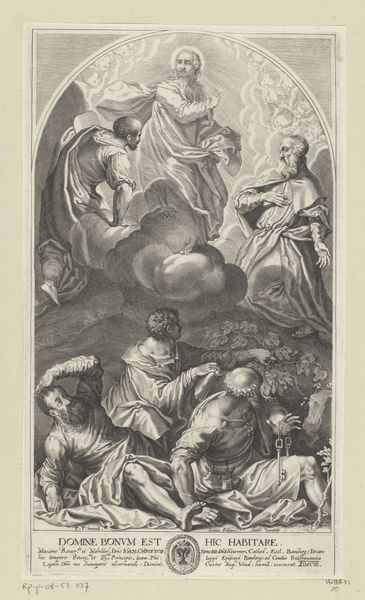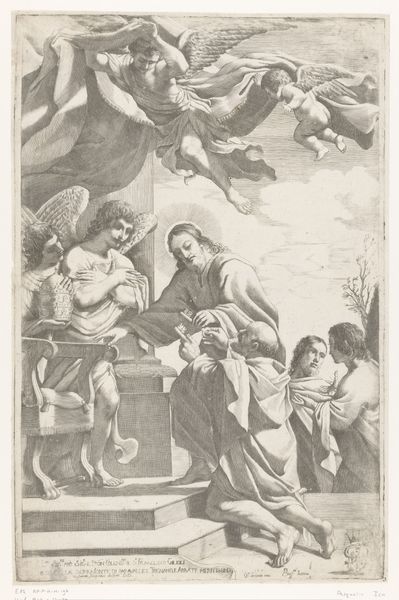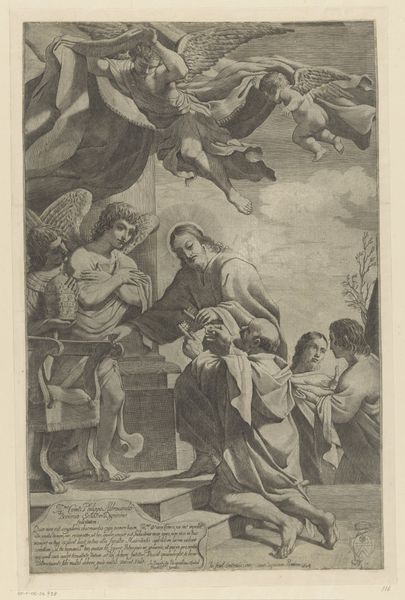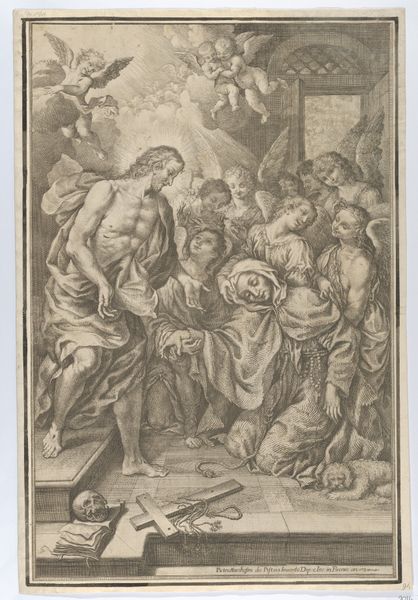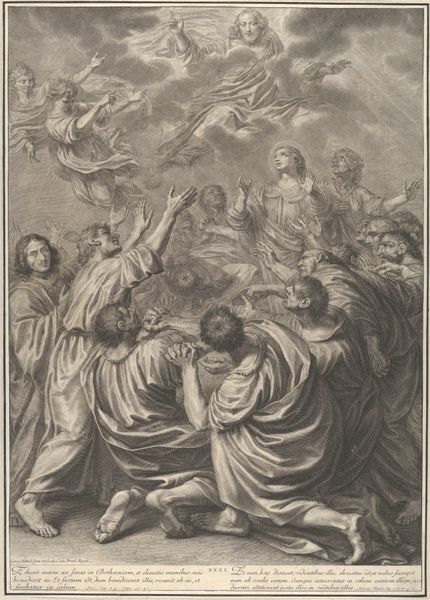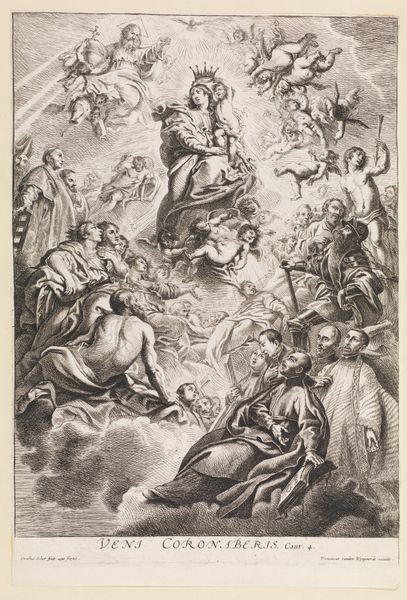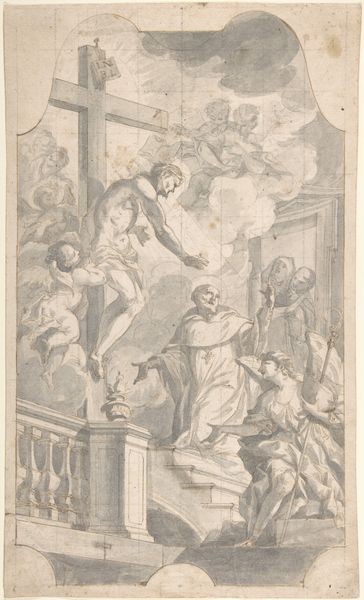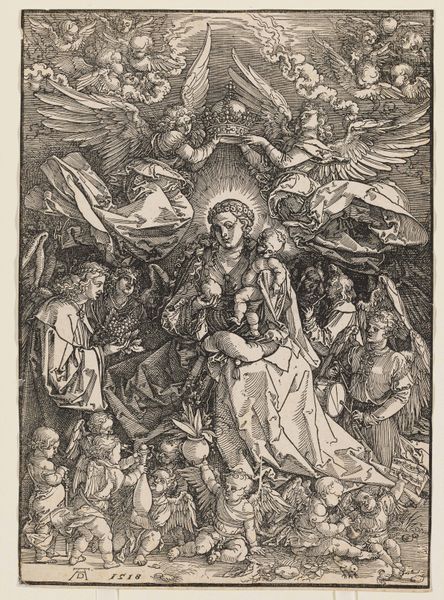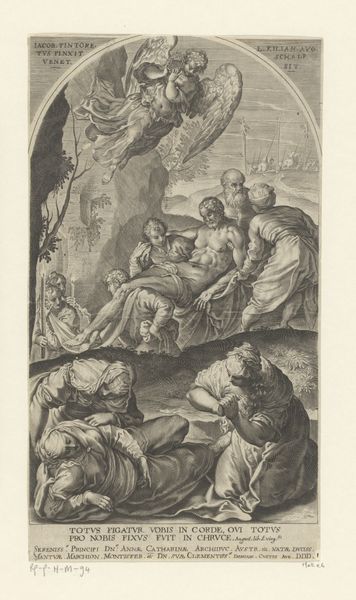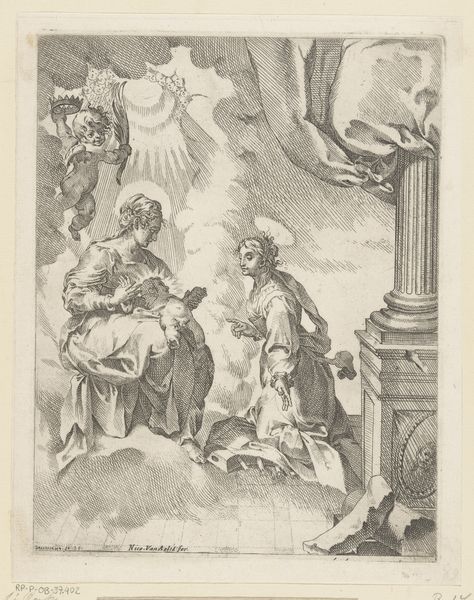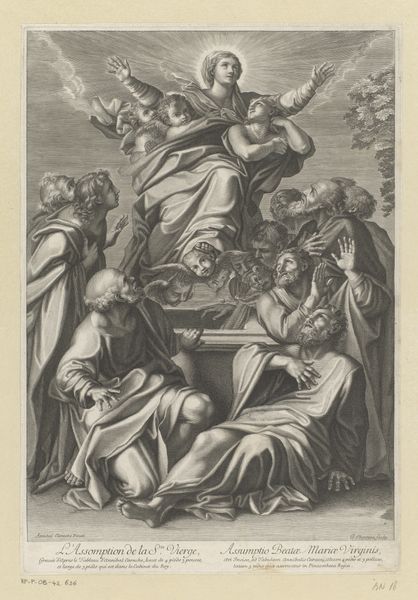
print, engraving
#
baroque
# print
#
figuration
#
history-painting
#
engraving
Dimensions: height 561 mm, width 385 mm
Copyright: Rijks Museum: Open Domain
Curator: Let’s take a look at this large print, dating from around 1745, called "Huwelijk van de heilige Catharina" or "The Marriage of Saint Catherine" by John Baptist Jackson, which the Rijksmuseum holds. My initial impression is of a somewhat monochromatic world. There's something almost sepia-toned and dreamy about it, despite the scene's dynamism. Editor: It's interesting that you pick up on the dreaminess because I feel a disquiet, or tension that I think is key here. Given its historical context, the monochromatic presentation could be seen as a form of social commentary. Jackson employed chiaroscuro woodcuts to emulate the effects of drawings, and also to engage in commercial exploitation in printmaking in Venice. The image of the mystic marriage becomes, in Jackson's interpretation, one laden with social awareness through a clear understanding of Venetian art history. Curator: Absolutely, you are spot-on with your astute assessment! He intentionally referenced Italian Renaissance masters like Parmigianino, appropriating their styles. In this piece, the theme depicts a marriage to symbolize the mystical union between Saint Catherine and Christ. It’s a narrative choice filled with religious connotations but given the choice of the artistic strategy, what's important to me is Jackson’s entrepreneurial approach. It's about skill but, it also demonstrates the complex economic landscapes within which art was produced, consumed and commodified. Editor: It does seem like his conscious choice to use printmaking allows for greater accessibility, distributing imagery but equally solidifies the canon. However, the representation of Saint Catherine herself raises interesting questions regarding female agency and societal expectations within religious contexts of 18th century Europe. Curator: Yes, it all speaks to how religious, political, and economic elements shaped artistic output and viewership. His artistic decision to create this large print using engravings reflects a negotiation between creative expression and financial sustainability, showcasing the interplay of these power dynamics. Editor: Looking closer, I'm appreciating the details—the expressions on the figures, the swirling angels above. However, reflecting on our conversation, the complexities involved point to art as not simply aesthetic but as a site of struggle, a testament to both its time and ours. Curator: A beautifully put ending and that is exactly the crux of art, isn't it? An encapsulation of moments in our social timelines that offer themselves to us as an ever open window for introspection.
Comments
No comments
Be the first to comment and join the conversation on the ultimate creative platform.
